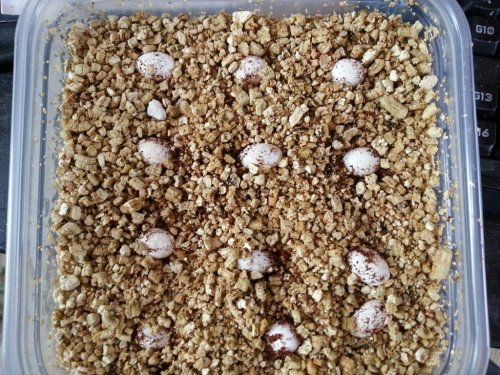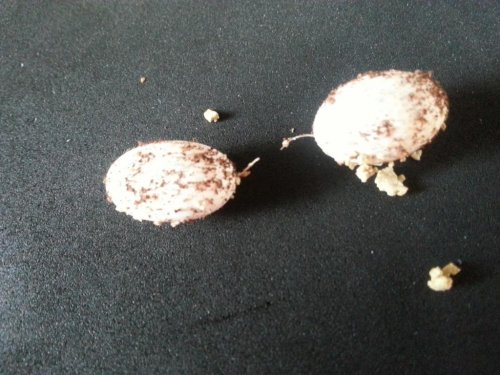jajeanpierre
Chameleon Enthusiast
On May 12th I found a pair of very young quad quads looking as if they were thinking about breeding. Based on comments by experienced quad breeders, I did't expect them to breed for another six to ten months mnimum. Picture in the link below.
https://www.chameleonforums.com/what-heck-going-here-140921/
On May 23rd and 24th I found them breeding. Picture in link below.
https://www.chameleonforums.com/he-old-enough-141131/
I didn't expect eggs until mid July at the earliest. The female has been very restless for a few days so I gave her a laying bin covering the whole bottom of her cage. She was driving me crazy climbing on the screen trying to get out of her cage. With dogs, especially first-time mothers, they will often refuse to go in their whelping box when they are in pre labor.
This afternoon she laid 12 eggs. Twelve beautiful eggs.
Was I shocked. I felt a few eggs, but I would never have guessed 12. I'm used to palpating for puppies, so was really shocked. She just wasn't big at all. To be honest, I expected four or five max. Twelve!
https://www.chameleonforums.com/what-heck-going-here-140921/
On May 23rd and 24th I found them breeding. Picture in link below.
https://www.chameleonforums.com/he-old-enough-141131/
I didn't expect eggs until mid July at the earliest. The female has been very restless for a few days so I gave her a laying bin covering the whole bottom of her cage. She was driving me crazy climbing on the screen trying to get out of her cage. With dogs, especially first-time mothers, they will often refuse to go in their whelping box when they are in pre labor.
This afternoon she laid 12 eggs. Twelve beautiful eggs.
Was I shocked. I felt a few eggs, but I would never have guessed 12. I'm used to palpating for puppies, so was really shocked. She just wasn't big at all. To be honest, I expected four or five max. Twelve!



